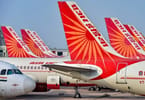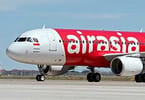UGANDA (eTN) – African aviation sources have, in communications with this correspondent, pointed out that the ongoing rollout, by Emirates in particular, was not necessarily in the best interest of the affected, or as others would say “benefitting” countries. Reasons were advanced that open sky agreements, which give Gulf, and other global carriers almost unrestricted access to key African countries, was a likely cause for national or regional aviation sectors not to develop as fast and as successfully as they should, because key routes were being taken over by foreign, non-African airlines at the expense of such carriers as Ethiopian, Kenya Airways, South African Airways, Air Mauritius, and Air Seychelles. Few observers, in fact, disagree with the sentiment, as the “battle for the African skies” has moved from the primary competition between the mentioned leading African airlines to a dual competition between themselves and their respective alliance backers on one side and Gulf-based airlines on the other, with the latter – according to some – running away with a growing market share.
Few could argue that service levels, on the ground, in flight, or in terms of new aircraft, is now a major factor, considering the orders and deliveries of new aircraft in place for Kenya Airways and Ethiopian, in comparison with Qatar Airways and Emirates for instance, but pricing levels and connectivity through the respective hubs are now playing an increasingly important role. It is there that African airlines simply cannot offer a global network, as yet at least, compared to the Gulf-based mega airlines. It is here in particular that “siphoning of traffic” is most pronounced and most damaging.
WHAT TO TAKE AWAY FROM THIS ARTICLE:
- Few could argue that service levels, on the ground, in flight, or in terms of new aircraft, is now a major factor, considering the orders and deliveries of new aircraft in place for Kenya Airways and Ethiopian, in comparison with Qatar Airways and Emirates for instance, but pricing levels and connectivity through the respective hubs are now playing an increasingly important role.
- Few observers, in fact, disagree with the sentiment, as the “battle for the African skies” has moved from the primary competition between the mentioned leading African airlines to a dual competition between themselves and their respective alliance backers on one side and Gulf-based airlines on the other, with the latter – according to some – running away with a growing market share.
- Reasons were advanced that open sky agreements, which give Gulf, and other global carriers almost unrestricted access to key African countries, was a likely cause for national or regional aviation sectors not to develop as fast and as successfully as they should, because key routes were being taken over by foreign, non-African airlines at the expense of such carriers as Ethiopian, Kenya Airways, South African Airways, Air Mauritius, and Air Seychelles.






















